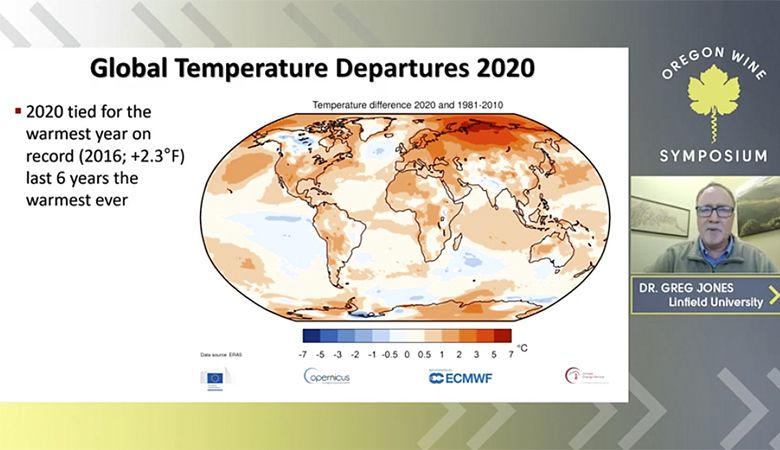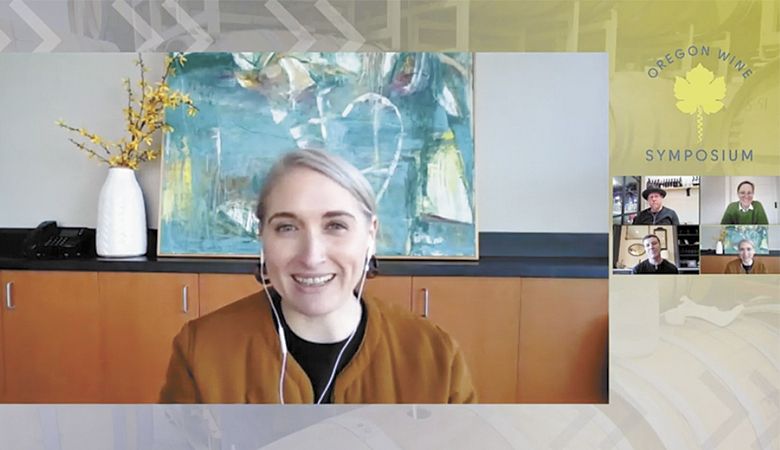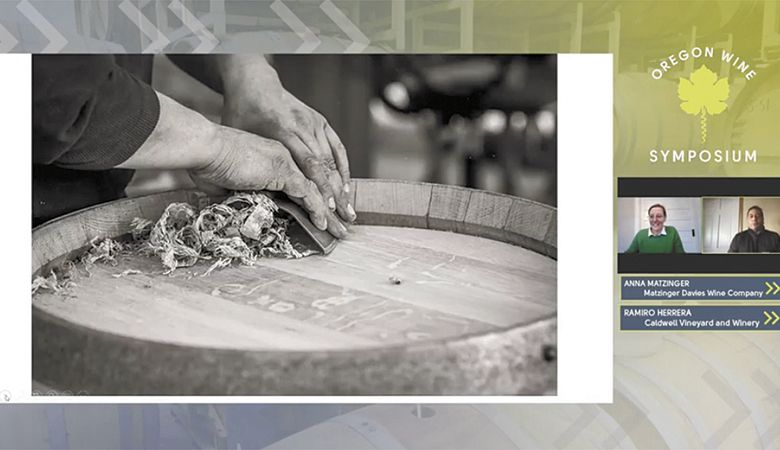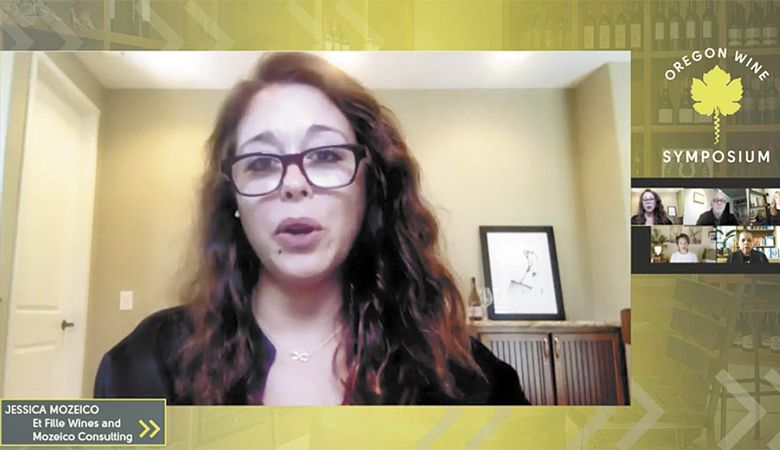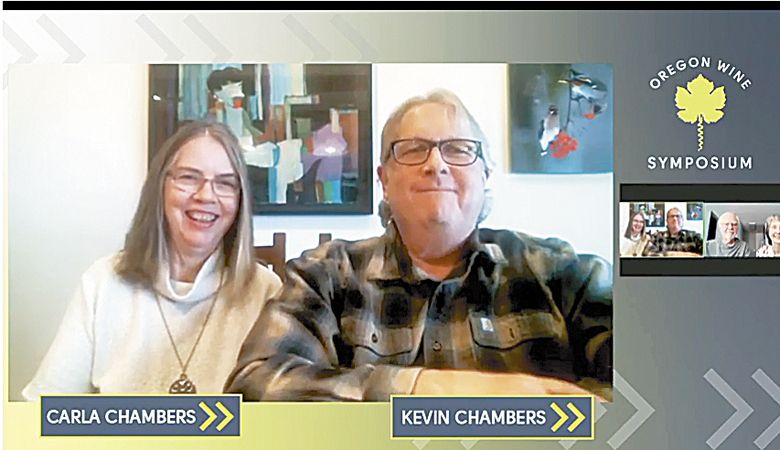Distance Learning
OWB hosts pandemic-proof virtual symposium
For the first time ever, the Oregon Wine Symposium went digital. For obvious reasons, the annual gathering conducted by the Oregon Wine Board and attended by scores of winemakers, growers, sales staff and other industry members had to be held remotely.
The new format appeared a success, touting accessibility, interactive functions and a great lineup of educational presentations. If not for a lingering winter storm resulting in massive power losses throughout the region, one could say everything went according to plan.
For those who did have internet access, this year’s symposium was full of highlights that reflected primarily on a tumultuous but important 2020. Here are some highlights:
Industry Inclusivity
It seems impossible not to feature this topic in 2021, and it’s great to see Oregon wine taking it seriously. Moderated by Jessica Mozeico of Et Fille Wines, the panel shared diversity and inclusive leadership techniques. Columbia Distributing’s ongoing inclusiveness campaign was featured and various industry members discussed important ways the Oregon wine scene can be more diverse. How it hires, how it presents to the outside world, and how it recognizes its own bias and privilege will all determine the future.
To the industry’s credit, the Willamette Valley Wineries Association has taken an important pledge committing itself to these ideals, one of the first major wine organizations in the nation to do so.
Smoke Research
A massive amount of work is being done now on smoke research. “We still do not even know close to enough,” said Dr. Anita Oberholster of UC Davis as part of the symposium’s smoke exposure impact seminar. “We have a lot ahead of us.”
The seminar discussed the economic impact from fire, estimated at a whopping $4 billion if you include tourism, sales and the whole industry. While those losses are certain, details about smoke impact and wine are still emerging. The panel advised using residual sugar and alcohol to mask smoke impact while avoiding tasks like washing fruit, which only invites more smoke compounds to bind to and enter the grapes. Regarding winemaking in the current fiery climate, Oberholster admitted, it’s about suppressing the effect, not eliminating it.
Smoke research sponsored by the OWB and conducted by Oregon State University was revealed. Researchers made red and white wines in micro-fermenters from smoke-impacted fruit and tracked the chemistry of the wines as they evolved. Bound smoke compounds continue to mystify the industry, as they are harder to investigate and tend to reappear in wines even after attempts of removal. The study suggested Pinot Gris was most at risk, while Chardonnay withstood smoke the best. The seminar also suggested that data doesn’t always agree with sensory perception, because not everyone notices smoke impact, and those who can tend to detect it differently.
Climatology Report
An annual marquee presentation, the Climatology Report presented by Dr. Greg Jones offered rather sobering news. Jones talked about the 2020 growing season, one that began with a cooler-than-average March, followed by a warmer-than-average remainder of the year. Drought persisted throughout 2020, including one of the driest Octobers ever recorded.
Every region outside Milton-Freewater registered above the 15-year temperature average. As most of us recall, last year featured three major heat dome events occurring in May, August and September. The Labor Day event provided the most drama, fueled by dry lightning from a Baja storm alongside devastating wildfires and winds. Jones explained how a high-pressure system forced smoke, trying to flee west over the Pacific Ocean, right back at Oregon. It would have been an extremely hot 10-day stretch; instead, the region witnessed daytime temperatures reduce 10 to 25 degrees for more than a week. Even more shocking, September 2020 was one of the top five warmest in Oregon history.
Extreme Weather
Another awakening presentation focused on hot weather events all over wine map. Research was shared from Burgundy, Australia and Oregon, regions where the atmosphere is absorbing more water, and the vineyards are, as a result, even drier. A French study discussed heat wave-induced grapevine cavitation — air bubbles form within the plant instead of moisture. The panel discussed how, in this case, Brix numbers would not be a good indicator of ripeness because it measures concentration, and if moisture is leaving the fruit, the Brix data will suggest the sugar is higher — and maturation is progressing — when, in fact, the fruit’s simply losing water to heat.
Burgundy noted record temperatures — a blistering 114 degrees — during the 2019 growing season. Heat like this essentially freezes the photosynthesis capacity in vines, meaning a stall in sugar production. When the heat is really extreme and long-winded, the plant sometimes fails to recover. Means of amelioration going forward included irrigation prior to heat waves, acclimating the fruit to warm conditions early on and even the use of shade cloths to protect vines.
A Toast to Barrels
One of the more fascinating presentations, aptly titled “A Toast to Barrels,” spotlighted master cooper Ramiro Herrera, who shed light on the amazing feat that earned him such a title. Herrera traveled to France at age 20 where he spent four years sharpening his barrel-making craft out of tools he made by hand. Presently, Herrera makes barrels for Caldwell Vineyard in Napa and is one of just a relatively scarce community of master coopers worldwide.
He discussed sourcing wood for barrels in the French forests, felling trees at least 150 years old. Vivid images and videos showed Herrera at work, bending staves around open fires. The presentation then meandered toward winemakers’ preferences and why they choose the barrels they do. There was consensus in finding the right balance between wood and fruit tannin, and selecting a barrel that enhances site and varietal. In an interesting associated study conducted by Dr. Igancio Nevares of the University of Valladolid in Spain, it was determined there’s significantly less oxygen transmission than we previously thought occurring while a wine is in barrel.
Economic Impact
A PowerPoint on the economic impact of 2020 also proved difficult to absorb. Fortunately, thanks to the delay involved in sourcing all the data and presenting the facts, the main focus was 2019, which showed a 23% increase in wine industry jobs throughout Oregon. It proved to be a colossal $7.2 billion industry in 2019, touting 1,297 growers, 908 wineries and an increase in 1,443 jobs from 2016 to 2019. In that same stretch, 6,960 new acres were planted.
As one might expect, wine grapes offer Oregon the greatest value in terms of crops, besting pears, hazelnuts, cherries and more. In 2019, 35,582 acres were harvested with an average yield of 2.97 tons per acre. That year, 4.66 million cases were produced within state lines. Not surprisingly, 2020 is expected to offer relatively dour figures. It’s estimated that all said, Oregon wine accounted for $5.73 billion that year, down 20.6% from 2019. (Read more about the latest economic report by clicking here.)
And the award goes to...
Nine individuals and two organizations were recognized as leaders of Oregon’s wine industry during the 2021 Oregon Wine Symposium in mid-February. More than 1,100 wine professionals and guests attended the virtual convention.
Vineyard Excellence Awards
Estaban Ramos, field operations manager for Croft Vineyards, has worked for the brand for two-plus decades. Antonio Mendez-Leon, vineyard manager of Eola Hills Wine Cellars, began his career with Eola Hills in 1996 planting trees.
Board Service Awards
Kevin Chambers of Koosah Farm and Barbara Steele of Cowhorn Vineyard are both exiting their influential posts as directors of the nine-member, governor-appointed Oregon Wine Board.
Founders Award
Given the award for his dedication, achievement and passion in Oregon wine, Doyle Hinman of Hinman Vineyards first planted vines in Oregon in 1972.
Outstanding Leadership
A trio of leaders from the Willamette Valley was recognized: Leigh Bartholomew of Dominio IV and Results Partners; Anthony King of Ratio Wines; and Mike McNally of Fairsing Vineyards.
Industry Partner
Two awards were given for exceptional performances: Davis Wright Tremaine and the Oregon Wine Research Institute at Oregon State University.
Lifetime Achievement
For the industry’s highest honor, Kevin and Carla Chambers of Koosah Farm were bestowed the coveted award.

